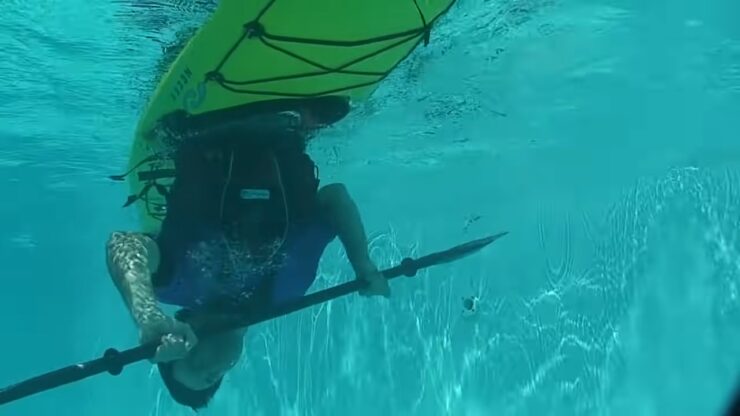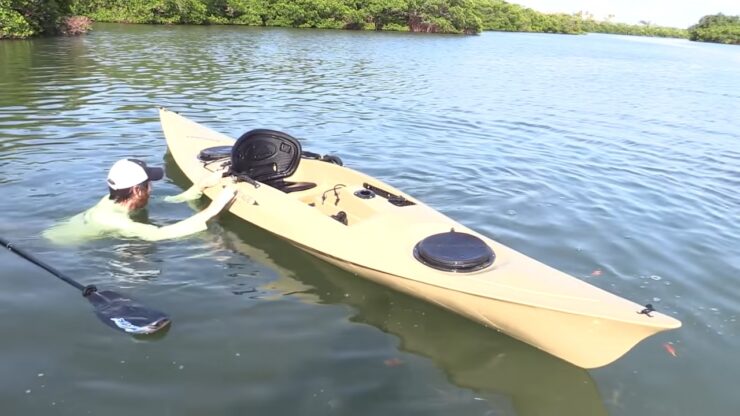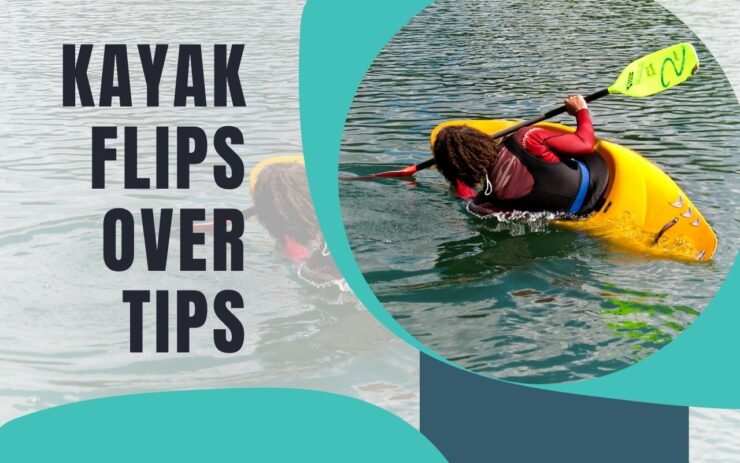Staying safe is the ultimate way of protecting yourself and others around you regardless of the situation or activity. When doing something for the very first time, no matter how dangerous it actually is, there is plenty of need for caution and care.
The same goes for kayaking. Using a kayak as a beginner is exciting and like many other things in life, it takes some practice to get the hang of things. Eventually, you learn the ropes and become proficient enough to advise others.
Before that can happen though, there are plenty of things that every kayaker needs to know so that they can stay safe while out and about in the water. Whether you are planning to go fishing with a kayak or just paddle around as a form of recreation, safety is the ultimate goal.
Of course, since you are on the water, the biggest problem is finding yourself outside of the vessel and in the water. In other words, the greatest problem with kayaking is capsizing your boat and finding yourself underneath it.
Now, there are many ways to avoid this but if it happens it is necessary for everyone to know how to behave. Panicking is never an option and the best possible outcomes happen to those who have the know-how.
Having information on your side and even practicing what to do when under a capsized kayak will prevent you from panicking and allow you to find the way out and back into your vessel. In this article, we talk about what needs to be done and whether or not one can even get stuck upside in a kayak. Read on to learn more about this.
Table of Contents
ToggleCan You Flip a Kayak?

In short, yes, of course, it is possible. In theory, any vessel can flip and capsize completely if the conditions are right (wrong?).
With kayaks, which are small one-person paddling boats, the chance to get them in an upside-down position is very real especially if the kayaker does not pay enough attention to what they are doing. Proper paddling and balancing are not enough and common sense also has to be a big part of it.
There exist different types of kayaks and not all of them are equally great at balancing. Some prefer speed, and others favor maneuverability, but the true distinction lies in their two main categories.
The first is sit-inside kayaks, vessels that are more like boats where you are almost completely inside of it with your legs in front of you. There are edges on the sides and a dedicated seat you “fall into”. The other type is sit-on-top kayaks which are more open, something like a board, without edges, and with higher chair-like seats.
Why is this distinction important? Well, it is because of how people use or wish to use kayaks. The sit-inside models only allow for sitting while you can freely stand up and stand on the sit-on-top varieties.
That is because the former is longer and narrower while the latter is shorter and wider. Standing up in a kayak meant for sitting will surely flip it over and you will end up in the water, probably with the kayak over your head. Buy how to escape this situation and can you really get stuck if it happens?
Finding Yourself Under a Kayak
If or when the kayak flips over, the kayaker does not really get trapped in it. From the looks of it and the feel, while paddling, it seems that the only way a flipping kayak situation ends is with the paddler underneath with the kayak over their head like a dome. It is definitely something to be concerned about as it is logical. However, it does not really happen that easily.
By the time the kayak fully flips over, the paddler more often than not out of the vessel and far away from it as it spins upside-down. There is barely any chance to get trapped as a matter of fact especially if you make a legitimate effort to escape it.
The cockpit will never enclose you inside and trap you. Keeping your head above the water is an instinct so when you start flipping it is customary to push yourself further into the water to escape the kayak’s enclosing.
It is very easy and quick to exit the vessel as it turns. Just embrace the water and extend yourself to the side. When you make contact with the water, you will continue to go further and the kayak will flip without you in it.
It is all in your subconscious and therefore a reaction that happens without you thinking about it much, if at all. There is of course a possibility to find yourself underneath the kayak, at which point you should simply dive your head in for a quick second and get clear of it .
Self Rescue and Gear Check

When you realize that your kayak is about to flip over and that you will be inside of it, you should give your gear a quick thought. Your exit from under there needs to be conscious. You will have some room to breathe as the kayak has a cockpit. Use it.
Make sure to pull away from the spray skirt and any other gear that is restricting your movement. Watch the paddle rope as you can get tangled in it. Regardless of what the situation is, know that you are highly unlikely to get trapped in the true sense of the word.
When you are free from any restricting equipment, you will be able to push yourself from the kayak to the side at which point the life jacket will push you to the surface. Make sure to stay close to the kayak.
Hold onto the bungee ropes or handles so that the waves and the wind do not separate you. Float with it until you think you are safe and then you can drag or push the kayak to a safe shore. Some kayaks are easy to flip back over and climb back into, but you do need to practice this in a controlled environment.
Meet Maria Alexander, the fearless adventurer steering the ship at KayakPaddling.net. Her mission? To convince you that life’s too short for dry land and that the best stories always start with “So there I was in my kayak…”
Related Posts:
- 16 Best Kayak For Beginners 2025 - Kayaking Adventure Gear
- Heavy Duty Fishing: 11 Best Rods And Reels For Big Fish 2025
- 10 Best Inflatable Kayak 2025 - Rivers, Lakes & Open Seas
- 10 Best Fish Finders Under $200 2025 - Top Affordable Picks
- 10 Best Kayaks For Camping 2025 - Lightweight and…
- 12 Best Motorized Kayak 2025 - Start Your Aquatic Adventure!












